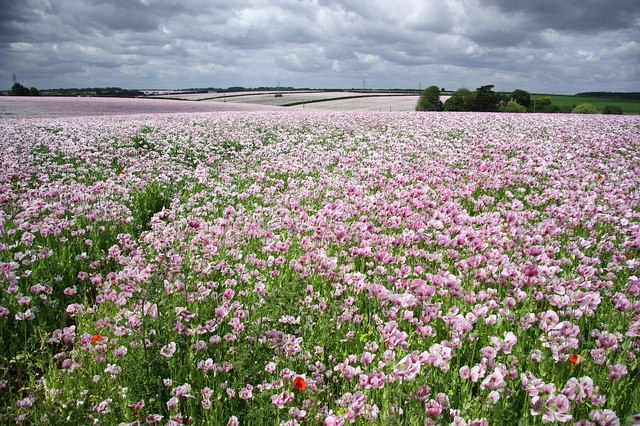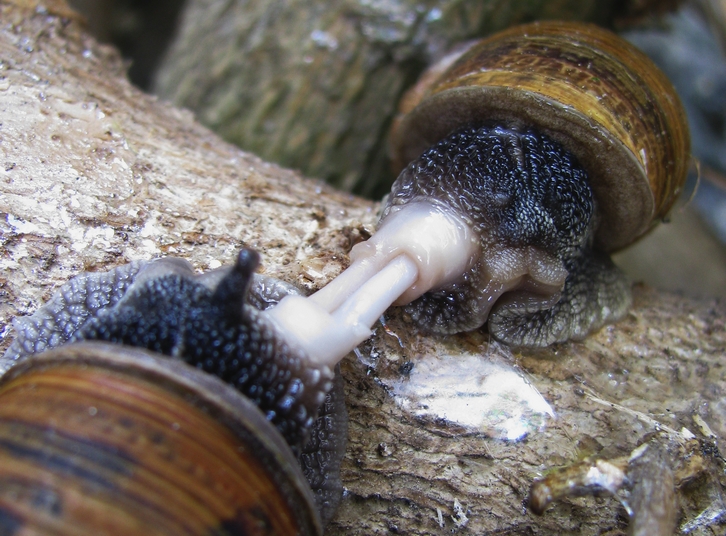|
Papaver Setigerum
''Papaver setigerum'', common name poppy of Troy or dwarf breadseed poppy, is a herbaceous annual plant of the family Papaveraceae. This plant is closely related to and sometimes treated as a subspecies of opium poppy (''Papaver somniferum''). In fact it produces a very small amount of morphine alkaloids. However, ''P. somniferum'' is diploid (n=11) and ''P. setigerum'' is tetraploid (n=22) with twice the number of chromosomes. So it cannot be considered the wild ancestral species of the opium poppy.C. G. Farmilo, H. L. J. Rhodes, , H. R. L. Hart and, H. TaylorDetection of Morphine in Papaver setigerum DC/ref> Etymology The genus name is derived from the Latin word ''papaverum'' meaning “poppy”, while the specific name ''setigerum'' derives the Latin "saetiger" meaning “bristly” for the short bristle on the top of the lobes of its leaves.Pignatti S. - Flora d'Italia – Edagricole – 1982. Vol. I, pag. 353 Description ''Papaver setigerum'' reaches on average in heig ... [...More Info...] [...Related Items...] OR: [Wikipedia] [Google] [Baidu] |
Herbaceous
Herbaceous plants are vascular plants that have no persistent woody stems above ground. This broad category of plants includes many perennials, and nearly all annuals and biennials. Definitions of "herb" and "herbaceous" The fourth edition of the '' Shorter Oxford English Dictionary'' defines "herb" as: #"A plant whose stem does not become woody and persistent (as in a tree or shrub) but remains soft and succulent, and dies (completely or down to the root) after flowering"; #"A (freq. aromatic) plant used for flavouring or scent, in medicine, etc.". (See: Herb) The same dictionary defines "herbaceous" as: #"Of the nature of a herb; esp. not forming a woody stem but dying down to the root each year"; #"BOTANY Resembling a leaf in colour or texture. Opp. scarious". Botanical sources differ from each other on the definition of "herb". For instance, the Hunt Institute for Botanical Documentation includes the condition "when persisting over more than one growing season, the p ... [...More Info...] [...Related Items...] OR: [Wikipedia] [Google] [Baidu] |
Annual Plant
An annual plant is a plant that completes its life cycle, from germination to the production of seeds, within one growing season, and then dies. The length of growing seasons and period in which they take place vary according to geographical location, and may not correspond to the four traditional seasonal divisions of the year. With respect to the traditional seasons, annual plants are generally categorized into summer annuals and winter annuals. Summer annuals germinate during spring or early summer and mature by autumn of the same year. Winter annuals germinate during the autumn and mature during the spring or summer of the following calendar year. One seed-to-seed life cycle for an annual plant can occur in as little as a month in some species, though most last several months. Oilseed rapa can go from seed-to-seed in about five weeks under a bank of fluorescent lamps. This style of growing is often used in classrooms for education. Many desert annuals are therophytes, b ... [...More Info...] [...Related Items...] OR: [Wikipedia] [Google] [Baidu] |
Papaveraceae
The Papaveraceae are an economically important family of about 42 genera and approximately 775 known species of flowering plants in the order Ranunculales, informally known as the poppy family. The family is cosmopolitan, occurring in temperate and subtropical climates (mostly in the northern hemisphere), but almost unknown in the tropics. Most are herbaceous plants, but a few are shrubs and small trees. The family currently includes two groups that have been considered to be separate families: Fumariaceae and Pteridophyllaceae. Description The plants may be annual, biennial, or perennial. Usually herbaceous, a few species form shrubs or evergreen trees. They are lactiferous, producing latex, which may be milky or watery, coloured or plain. All parts contain a well-developed duct system (these ducts are called "laticifers"), producing a milky latex, a watery white, yellow or red juice. The simple leaves are alternate or sometimes whorled. They have petioles and are not ... [...More Info...] [...Related Items...] OR: [Wikipedia] [Google] [Baidu] |
Papaver Somniferum
''Papaver somniferum'', commonly known as the opium poppy or breadseed poppy, is a species of flowering plant in the family Papaveraceae. It is the species of plant from which both opium and poppy seeds are derived and is also a valuable ornamental plant, grown in gardens. Its native range is probably the eastern Mediterranean, but is now obscured by ancient introductions and cultivation, being naturalized across much of Europe and Asia. This poppy is grown as an agricultural crop on a large scale, for one of three primary purposes. The first is to produce seeds that are eaten by humans, commonly known as poppy seed. The second is to produce opium for use mainly by the pharmaceutical industry. The third is to produce other alkaloids, mainly thebaine and oripavine, that are processed by the pharmaceutical industry into drugs such as hydrocodone and oxycodone. Each of these goals has special breeds that are targeted at one of these businesses, and breeding efforts (including ... [...More Info...] [...Related Items...] OR: [Wikipedia] [Google] [Baidu] |
Diploid
Ploidy () is the number of complete sets of chromosomes in a cell, and hence the number of possible alleles for autosomal and pseudoautosomal genes. Sets of chromosomes refer to the number of maternal and paternal chromosome copies, respectively, in each homologous chromosome pair, which chromosomes naturally exist as. Somatic cells, tissues, and individual organisms can be described according to the number of sets of chromosomes present (the "ploidy level"): monoploid (1 set), diploid (2 sets), triploid (3 sets), tetraploid (4 sets), pentaploid (5 sets), hexaploid (6 sets), heptaploid or septaploid (7 sets), etc. The generic term polyploid is often used to describe cells with three or more chromosome sets. Virtually all sexually reproducing organisms are made up of somatic cells that are diploid or greater, but ploidy level may vary widely between different organisms, between different tissues within the same organism, and at different stages in an organism's life cycle. ... [...More Info...] [...Related Items...] OR: [Wikipedia] [Google] [Baidu] |
Tetraploid
Polyploidy is a condition in which the cells of an organism have more than one pair of (homologous) chromosomes. Most species whose cells have nuclei (eukaryotes) are diploid, meaning they have two sets of chromosomes, where each set contains one or more chromosomes and comes from each of two parents, resulting in pairs of homologous chromosomes between sets. However, some organisms are polyploid. Polyploidy is especially common in plants. Most eukaryotes have diploid somatic cells, but produce haploid gametes (eggs and sperm) by meiosis. A monoploid has only one set of chromosomes, and the term is usually only applied to cells or organisms that are normally diploid. Males of bees and other Hymenoptera, for example, are monoploid. Unlike animals, plants and multicellular algae have life cycles with two alternating multicellular generations. The gametophyte generation is haploid, and produces gametes by mitosis, the sporophyte generation is diploid and produces spores by me ... [...More Info...] [...Related Items...] OR: [Wikipedia] [Google] [Baidu] |
Hermaphrodite
In reproductive biology, a hermaphrodite () is an organism that has both kinds of reproductive organs and can produce both gametes associated with male and female sexes. Many taxonomic groups of animals (mostly invertebrates) do not have separate sexes. In these groups, hermaphroditism is a normal condition, enabling a form of sexual reproduction in which either partner can act as the female or male. For example, the great majority of tunicates, pulmonate molluscs, opisthobranch, earthworms, and slugs are hermaphrodites. Hermaphroditism is also found in some fish species and to a lesser degree in other vertebrates. Most plants are also hermaphrodites. Animal species having different sexes, male and female, are called gonochoric, which is the opposite of hermaphrodite. There are also species where hermaphrodites exist alongside males (called androdioecy) or alongside females (called gynodioecy), or all three exist in the same species (called trioecy); these three ... [...More Info...] [...Related Items...] OR: [Wikipedia] [Google] [Baidu] |
Stamen
The stamen (plural ''stamina'' or ''stamens'') is the pollen-producing reproductive organ of a flower. Collectively the stamens form the androecium., p. 10 Morphology and terminology A stamen typically consists of a stalk called the filament and an anther which contains '' microsporangia''. Most commonly anthers are two-lobed and are attached to the filament either at the base or in the middle area of the anther. The sterile tissue between the lobes is called the connective, an extension of the filament containing conducting strands. It can be seen as an extension on the dorsal side of the anther. A pollen grain develops from a microspore in the microsporangium and contains the male gametophyte. The stamens in a flower are collectively called the androecium. The androecium can consist of as few as one-half stamen (i.e. a single locule) as in ''Canna'' species or as many as 3,482 stamens which have been counted in the saguaro (''Carnegiea gigantea''). The androecium in va ... [...More Info...] [...Related Items...] OR: [Wikipedia] [Google] [Baidu] |
Filament (botany)
The stamen ( plural ''stamina'' or ''stamens'') is the pollen-producing reproductive organ of a flower. Collectively the stamens form the androecium., p. 10 Morphology and terminology A stamen typically consists of a stalk called the filament and an anther which contains '' microsporangia''. Most commonly anthers are two-lobed and are attached to the filament either at the base or in the middle area of the anther. The sterile tissue between the lobes is called the connective, an extension of the filament containing conducting strands. It can be seen as an extension on the dorsal side of the anther. A pollen grain develops from a microspore in the microsporangium and contains the male gametophyte. The stamens in a flower are collectively called the androecium. The androecium can consist of as few as one-half stamen (i.e. a single locule) as in ''Canna'' species or as many as 3,482 stamens which have been counted in the saguaro (''Carnegiea gigantea''). The androecium in ... [...More Info...] [...Related Items...] OR: [Wikipedia] [Google] [Baidu] |
Aude
Aude (; ) is a department in Southern France, located in the Occitanie region and named after the river Aude. The departmental council also calls it " Cathar Country" (French: ''Pays cathare'') after a group of religious dissidents active in the 12th to 14th centuries. Its prefecture is Carcassonne and its subprefectures are Limoux and Narbonne. As of 2019, it had a population of 374,070.Populations légales 2019: 11 Aude INSEE Aude is a frequent feminine French given name in Francophone countries, deriving initially from Aude or Oda, a wife of Bertrand, Duke of Aquitaine, and mother of Eudo, brother of Saint Hub ... [...More Info...] [...Related Items...] OR: [Wikipedia] [Google] [Baidu] |
Papaver
''Papaver'' is a genus of 70–100 species of frost-tolerant annuals, biennials, and perennials native to temperate and cold regions of Eurasia, Africa and North America. It is the type genus of the poppy family, Papaveraceae. Description The flowers have two sepals that fall off as the bud opens, and four (or up to six) petals in red, pink, orange, yellow, or lilac. There are many stamens in several whorls around a compound pistil, which results from the fusion of carpels. The stigmas are visible on top of the capsule, and the number of stigmas corresponds to the number of fused carpels. The ovary later develops into a dehiscing capsule, capped by the dried stigmas. The opened capsule scatters its numerous, tiny seeds as air movement shakes it, due to the long stem. The typical ''Papaver'' gynoecium is superior (the flower is hypogynous) with a globular ovary. The style is characteristically absent for the type species opium poppy, and several others, although thos ... [...More Info...] [...Related Items...] OR: [Wikipedia] [Google] [Baidu] |





